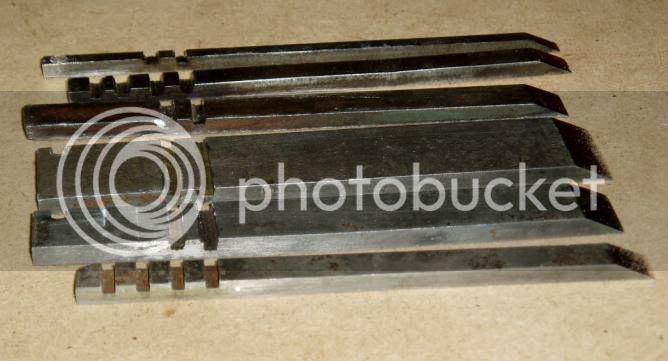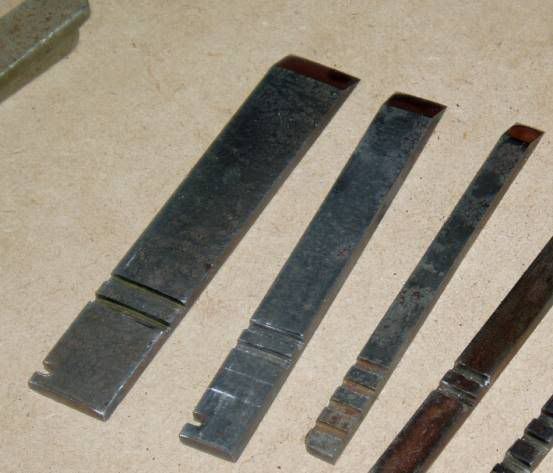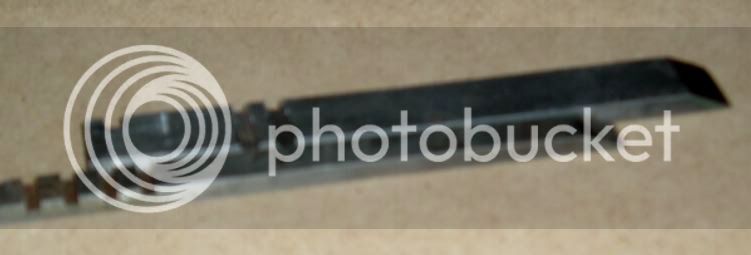I've only had a couple of hours to use this little plane but I gotta say, it rocks. Making grooves is fun now. Dragging out the electric router is a hassle and I never look forward to trying to think of how to capture the dust, clean up the shop etc.
The cutters are a little rusted from being in their cardboard sleeve but they clean up pretty quickly. Sharpening them is easy because you can do it freehand. The cutters don't demand the same level of precision in sharpening that a smoother's iron does -- a nice change.
I was surprised at how fast it is to zip out some dadoes with this little sucker. I wouldn't want to do it in a production environment but for doing casework, drawers, etc it's the way to go. When you factor in the setup and cleanup time for a tailed router, this is almost as fast -- and a lot more rewarding. I can see why Derek makes his own blades. They wouldn't be hard to knock out and you could do custom widths or profiles. I was making some practice cuts in a piece of maple and before I knew it I had a 1/4" by 3/8" dado.
The cutters are a little rusted from being in their cardboard sleeve but they clean up pretty quickly. Sharpening them is easy because you can do it freehand. The cutters don't demand the same level of precision in sharpening that a smoother's iron does -- a nice change.
I was surprised at how fast it is to zip out some dadoes with this little sucker. I wouldn't want to do it in a production environment but for doing casework, drawers, etc it's the way to go. When you factor in the setup and cleanup time for a tailed router, this is almost as fast -- and a lot more rewarding. I can see why Derek makes his own blades. They wouldn't be hard to knock out and you could do custom widths or profiles. I was making some practice cuts in a piece of maple and before I knew it I had a 1/4" by 3/8" dado.







